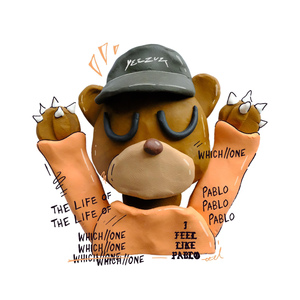 rano 🇧🇷Jun 23, 2023
rano 🇧🇷Jun 23, 2023 Tranquility
Tranquilityfp > csm
- https://twitter.com/FARfromani/status/1671916541095428098
 Tranquility
Tranquilitythese teasers...
Damn this mf is a frequent guest at a anime twitch channel i follow lol
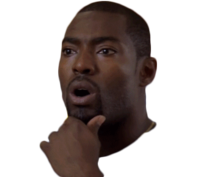
All gifs in order
Yu Yu Hakusho (1992)
Ninku (1995)
FLCL (2000)
Cowboy Bebop: The Movie (2001)
Millennium Actress (2001)
Ghost in the Shell 2: Innocence (2004) mostly redraws though this is largely him
Naruto: Ninja Clash in the Land of Snow (2004)
Tales from Earthsea (2006)
Evangelion 2.0 You Can (Not) Advance (2009)
Blood-C (2011)
Evangelion 3.0 You Can (Not) Redo (2012)
Boruto: Naruto the Movie (2015)
Persona 5 (2016) Presumed
Psycho-Pass 3 (2019)
Evangelion 3.0 + 1.0 Thrice Upon a Time (2021) character animation by Hirofumi Matsuda actually
Vampire in the Garden (2022)Happy Birthday to Tetsuya Nishio. A primary member of Production I.G., he is placed in the upper echelon of the company with the “Three Wolves (or Gods) of Production I.G.”, the other two being Hiroyuki Okiura and Kazuchika Kise. Among the three Nishio has the largest body of work, and is the trio’s primary action animator. His animation is composed of pure heightened realism and a nostalgic aura, drawing influences from several different schools of thought, and applying them into every single frame. His drawings can go from realistic, and detailed, to chibi-like exaggerations depending on the situation. Mainly inspired by Satoru Utsunomiya, his earliest work was becoming a star figure on Yu Yu Hakusho, where he proved himself as one of the best on the show’s staff. From there he became a recurring figure on I.G. productions where he’d permanently make his residence in 1998, helping with fantastic titles such as; FLCL, Ghost in the Shell spinoff shows and movies, and more. Despite his loyalty to I.G., Nishio is also a leading figure back at Studio Pierrot where his 20 plus year dedication to Naruto has permanently shaped the visual identity of the anime. Even mangaka creator Masashi Kishimoto selected him to be the character designer for the anime series, and has remained the main designer with every iteration of the series from Shippuuden to Boruto. Nishio deserves his god status as one of the most consistent animators in the industry, let’s talk about him.
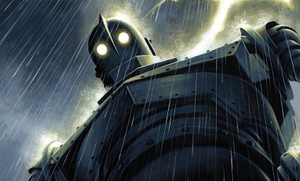 Scooter
ScooterYeah i don't want to see ZZ s*** on zeta just yet. Chars counterattack also sounds fire so I'm trying to save it
The MC development in MSG and zeta is one of the better parts of the whole show imo - Some of the other characters... Katz
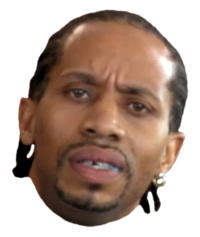 could have used some of that development
could have used some of that developmentYeah, I skipped ZZ and still haven't seen it but I might watch it after I have finished G Gundam and Turn A. You should definitely check out 0080. The best out of all the ovas
Wanting to be an animator for a long time Nishio enrolled and graduated from Nagoya Designer Academy, and began working at Anime Spot a small subcontracting studio that was around in the late 80s. His first work was in-betweening on Osomatsu-kun and later on Laughing Salesman.
After doing in-betweening for several years, we get Nishio’s true bit of sakuga very early into his career on Yu Yu Hakusho in 1992.

Adapted by the manga of the same name by Yoshihiro Togashi, the anime was handled by Studio Pierrot which had been a studio for at least 13 years at that point. The studio had an eclectic array of directors and creatives (one being Mamoru Oshii), and producers elected Noriyuki Abe to be brought on as director. Many newer animators would be brought on to the project with heavy hitters like Atsushi Wakabayashi, and Rumiko Takahashi brought on off the heels of Ranma. Even Kanada students like Shinsaku Kozuma, and realist Satoru Utsunomiya would make appearances. This show marks a significant shift of Japanese action animation as it feels like a passing of the torch from “Kanada-school” animation to Norio Matsumoto’s (mind you he doesn’t even appear in Hakusho) “flow animation”. Wakabayashi had studied animation under Matsumoto only key animating for three years until he moved to Pierrot. Nishio was aware of all of these guys by the time he was brought on and began to show off what he was capable of.Early on Nishio did work on Episodes 2, 9, 14, and 19. He did a fair bit of character acting, although action was the main focus as you can see some of his contemporaries influence on Episode 14 sakugabooru.com/post/show/120388\. Kind of janky frame modulation early on though very discernible action. You can also see him on OP 2 around the same time.

Nishio at 1:08-1:21
In-between the seasons he got to work on Yuu Yuu Hakusho: The Golden Seal in 1993. Where he displayed a much higher affinity for action though it didn’t feel distinctly him just yet sakugabooru.com/post/show/39682\. This would all change with his work on Episode 49 that same year with Shishiwakamaru’s “Shrill Call of The Reaper” attack against Genkai during the “Dark Tournament Saga”

Nishio only does the ghost cuts from 1:57-3:24, he picks back up at 9:48-10:16, and at 10:31-10:59
You can see a lot of Mitsuo Iso and Matsumoto influence in these cuts, although with Matsumoto more reliant on character acting you see Nishio taking more risks at effects especially with the ghosts. Nishio makes the ghost beings abstract and strange making it indeterminate what material they seem to be made out of. While they seem viscous and watery there is also an element of them that moves like transparent beings. It’s very ambitious and feels like a stepping stone away from Kanada heavy effects. The next big moment would be Yoko’s fight against Karasu on Episode 56 during the arc sakugabooru.com/post/show/63301\. This is where I truly think many of Nishio’s fast paced mannerisms began to sink in.
Nishio would be absent for the majority of the next arc as he’d work on The Hakkenden: A New Saga. A second half of an OVA released in 1990 produced by AIC. The first half was an important jumping off point for many of the Akira staff such as Takashi Nakamura and many others jumping on. Four years later its time for Shinji Hashimoto to do AD on Episode 9 where Nishio debuted sakugabooru.com/post/show/150690 we get a good sense of Hashimoto’s style even though the episode was directed by Satoru Utsunomiya. Very strange and wafty effects animation, and the character designs randomly an unstably shift from Utsunomiya’s to Hashimoto’s. The same year Nishio would return to Hakusho where he’d make an insane splash on Episode 92 with Yusuke vs Sensui sakugabooru.com/post/show/120394\. Tight fast paced fighting with very good storyboards. Although Id argue his work on Hakkenden was much better sakugabooru.com/post/show/162343 his most realistic work to date at the time.
Thanks to Nishio’s hard work on Yu Yu Hakusho he was able to hop on to Pierrot’s next project Ninku, this time as a character designer. His first effort in the position, and its incredibly impressive

Adapted from the manga by Koji Kiriyama, the anime was a barely canon adaptation being mostly original. Improving on some things the manga did, and being a majority of episodic stories. Here throughout the show Nishio’s love for Utsunomiya is more present than ever in his main characters and tertiary ones.For sakuga, Nishio only worked on 3 episodes. His most accomplished work however is on the show’s opening

Nishio from 0:54-1:35,
Without a doubt one of the best animated sequences by Nishio, he goes full flow motion delivering completely ostentatious motions without ever getting too carried away in the complexities of it all due to simple designs. Amazing storyboarding, and chunky debris animation. Of the few episodes Nishio does animate on we begin to see him use more realistic and weighty animation to convey action with some subtle exaggeration added in sakugabooru.com/post/show/84567, seems to be influenced by Toshiyuki Inoue. On Episode 50, Nishio remarked that the absurd amount of drawings frustrated Pierrot higher ups, costing a ton of money with Wakabayashi being the primary culprit.Shortly after Ninku ending, Nishio would primarily animate OPs for the next few years such as Virtua Fighter, Midori no Makibao. Kare Kano was a fairly important one as we begin to see Nishio implementing his sketchy art style.

Nishio from 0:29-0:53
It would not be until 1999’s Great Teacher Onizuka OP where we would see a complete solo KA by Nishio.

Directed by Blue Seed and Neo Ranga director Jun Kamiya we see the two opt for a complete manga like quality opting for all black and white making it look like transitions from page to page. The cut is dripping with swagger, and and an unbelievable degree of cool from Nishio.
The same year he also did a fair bit of animation on Medarot an underrated robot fighting show by Production I.G. that needs a re-release. From the show Nishio contributes a small bit of action, but also his best character acting cut up to this point sakugabooru.com/post/show/14129\. This is also when he fully committed to Production I.G. first starting with Okiura's dark opus.

In the winter of 1999 (French release), Hiroyuki Okiura debuted as a director on Jin-Roh: The Wolf Brigade, written by Mamoru Oshii. Nishio was brought on as a character, along as an AD same with Toshiyuki Inoue. Ei Inoue (not related) and Shougo Furuya served as assistants supervisors. Okiura is known to have a super hands on approach to directing and animation supervision. Being completely reliant on realism, that goes with designs and movement fully omitting any ounce of exaggeration. Many animators from across the industry had experience here as many of Oshii’s core team return with animators like Toyoaki Emura were brought on. Some of the best animators at the time were also brought on; Michio Mihara, Gainax’s trio of Tadashi Hiramatsu, Takeshi Honda, and Yoh Yoshinari, fight sakuga genius Masahiro Ando, Hiroyuki Horiuchi, Ghibli’s Shinji Otsuka and Hiroshi Shimizu, and relative I.G. newcomers Yasunori Miyazawa and Hisashi Furukawa. Nishio himself corrected many character acting cuts in the most subtle moments of the film, and I believe helped with some of the crowd scenes.
The next year we get to see Nishio’s big break back into action sakuga on FLCL.
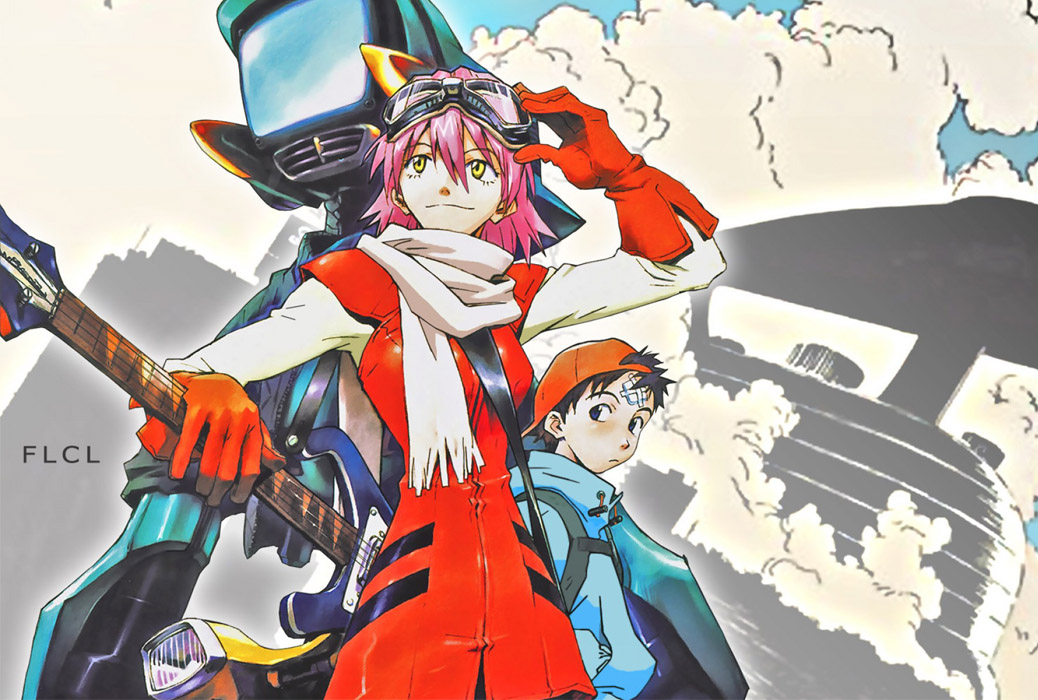
A joint effort between Production I.G. and Gainax, its two animation departments squaring off against each other to see who can outdo the others sakuga. On the I.G. side we have Shinya Ohira, Mitsuo Iso, Kouichi Arai, and many returning animators from Jin-Roh like Hiroshi Shimizu, Ei Inoue, with Otsuka and Nishio committing themselves as the shows primary animators. Then you have rare form Gainax with newcomers like Sushio and Hiroyuki Imaishi both nearly destroying the competition like a pair of ADHD induced crazy guys, with Yoh Yoshinari being their cherry on top. Many veterans on their staff also appear with Masayuki, Yusuke Yoshigaki, Hiramatsu, Honda, and even Evangelion director himself Hideaki Anno making an appearance. Freelancer Masashi Ishihama came on too. You’d think after Nishio committing to full realism on Jin-Roh, and not doing much fight animation over the past five years he would be a little sloppy returning to it, and you couldn’t be more wrong. This is some of Nishio’s most competent, and focused his animation has ever looked. No stranger to exaggeration and his excessive use of flow animation helps him stand out amongst the more prominent Gainax staff. Episode 1, the consistency of great animation from Nishio -> Yoshinari -> Honda is staggering.
Nishio 0:00-0:40, full scene sakugabooru.com/post/show/221862
On Episode 2, he shows of some insane ‘tentacle stretchy arms’? animation and debris animation with the guitar smash by Haruko being a serious highlight. The quick close up shot of Haruko is also an early example of Nishio drawing fang-like teeth for characters during action scenes to bring out more intensity.

Nishio 1:08-1:44
He also did this iconic shot earlier in the episode sakugabooru.com/post/show/221869He’d come on to Episode 3 doing some character animation sakugabooru.com/post/show/83657\. And on Episode 5 he fully flexes his comedic character acting muscles sakugabooru.com/post/show/221909 and then moves on to fight.

Nishio first cut, 0:12-0:27, he appears again at 2:57-3:48
and on Episode 6, Nishio takes up the majority of the final fight, just pure goodness

0:11-1:05


























